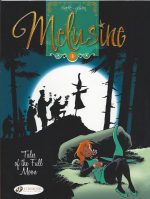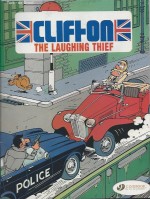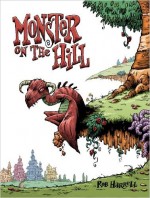
By Jean Roba, translated by Luke Spear (Cinebook)
ISBN: 978-1-905460-91-5
Known as Boule et Bill on the Continent (or more accurately in the French speaking bits, as the Dutch and Flemish call them Bollie en Billie), this timeless and immensely popular cartoon story of a boy and his dog debuted in the Christmas 1959 edition of multinational Spirou.
It was the result of Belgian writer-artist Jean Roba (Spirou et Fantasio, La Ribambelle) putting his head together with the magazine’s Artistic Director/Ideas Man Maurice Rosy – who had also ghosted art and/or scripts on Jerry Spring, Tif et Tondu, Bobo and Attila during his decades long, productive career with the legendary periodical.
Intended as a European answer to Charles Schulz’s Peanuts, Boule et Bill would quickly go its own way and carve out a unique personality all its own, becoming Rosa’s main occupation for the next 45 years.
He tirelessly crafted more than a thousand pages of gag-strips in a beguiling idealised domestic comedy about a little lad and his rather clever Cocker Spaniel before – in 2003 – handing the art-chores over to his long-term assistant Laurent Verron. The substitute subsequently took over the writing too after the originator died in 2006.
Jean Roba was born in Schaerbeek, Belgium on July 28th 1930 and grew up reading primarily American reprint strips. He was particularly fond of Rudolph Dirks and Harold H. Knerr’s Katzenjammer Kids. After the War he began working as a jobbing illustrator before adopting the loose, free-wheeling cartooning style known as the “Marcinelle School†and joining the Spirou crew.
He followed Uderzo on Sa majesté mon mari and perfected his comics craft under Franquin on Spirou et Fantasio before launching Boule et Bill as a mini-récit (a 32-page, half-sized freebie insert) in the December 24th 1959 Spirou.
Like our own Dennis the Menace in The Beano, the strip was incredibly popular from the start and for 25 years held the coveted and prestigious back-cover spot. Older British fanboys might also recognise the art as early episodes – retitled It’s a Dog’s Life – ran in Fleetway’s Valiant from 1961 to 1965…
A cornerstone of European life, the strip has generated a live-action movie, animated TV series, computer games, permanent art gallery exhibitions, sculptures and even postage stamps. Like some select immortal Belgian comics stars, Bollie en Billie have a commemorative plaque and a street named after them in Brussels….
Large format album editions began immediately, totalling 21 volumes throughout the 1960s and 1970s. These were completely redesigned and re-released in 1980s, supplemented by a range of early reader books for the very young. Comics collections have been translated into fourteen languages and sold in excess of 25 million copies of the 32 albums to date.
Renamed Billy and Buddy, the strip debuted en Angleterre in enticing Cinebook compilations from 2009 on: introducing a standard sitcom nuclear family consisting of one bemused and long-suffering father, a warm, compassionate but painfully ditzy mother, a smart son and his genius dog which has a penchant for finding bones, puddles and trouble…
The majority of this book – Tu te rappelles, Bill? – was originally the sixth collection before being cut down and reissued as volume 17 in Europe, but here acts as the ideal vehicle to set up the characters and settings for our delight and delectation.
Inside you’ll see a non-stop parade of quick-fire quips and jests as seven-year old Billy enjoys carefree romps with four-footed friend Buddy: digging up treasure on the beach, chasing cats, learning tricks to be useful around the house and generally baffling and annoying grown-ups.
Buddy is the perfect pet for an imaginative boy, although he’s overly fond of bones and rather protective of them. He also does not understand why everyone is so keen to constantly plunge him into foul-tasting soapy water, but it’s just a sacrifice he’s prepared to make to be with Billy…
Gently-paced and filled with wry wit and potent sentiment, these captivating vignettes range from heart-warming to hilarious: a charming tribute to and argument for a child for every pet and vice versa. This is a solid, family-oriented collection of comics no one trying to introduce youngsters to the medium should be without.
Original edition © Studio Boule & Bill 2008 by Roba. English translation © 2009 Cinebook Ltd.












